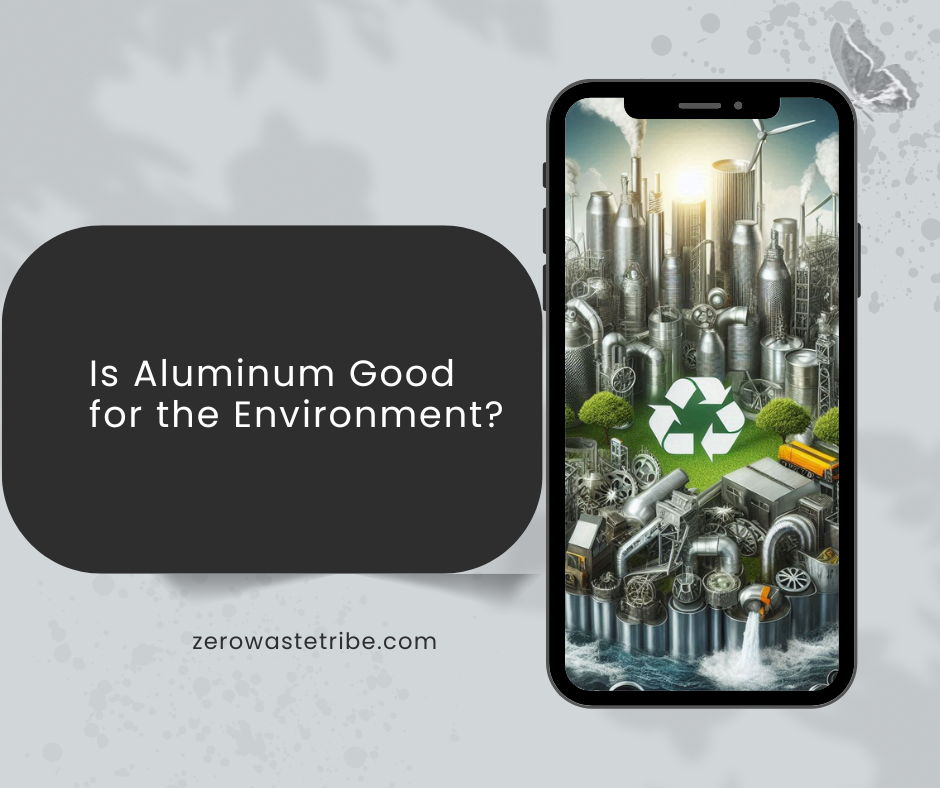Picture this: You’re standing in your kitchen, holding an aluminum can. Maybe it’s your morning energy drink or that sparkling water you love. Ever wondered about the environmental journey of that simple can in your hand? As someone who’s spent years researching sustainable materials, I can tell you that aluminum’s environmental story is anything but straightforward. Let’s dive into this fascinating metal’s impact on our planet, and trust me – some of what you’ll learn might surprise you.

The Real Environmental Cost of Aluminum Production
When I visited a bauxite mine in Australia last year, the scale of operations stopped me in my tracks. Imagine entire mountains being slowly carved away – that’s the reality of aluminum’s birth story. According to data from the International Aluminum Institute, producing just one ton of aluminum requires about four tons of bauxite. That’s a lot of earth being moved.
The Mining Conundrum
The process starts with bauxite mining, and here’s where things get interesting. According to recent studies by Nature Sustainability, bauxite mining impacts roughly 50,000 hectares of land annually. To put that in perspective, that’s about 70,000 football fields. But it’s not just about the land:
- Tropical forests often face the bulldozer for new mines
- Indigenous communities can be displaced
- Local water systems frequently suffer contamination
- Wildlife habitats get fragmented or destroyed
The World Wildlife Fund reports that some of the world’s most biodiversity-rich areas overlap with bauxite deposits. Talk about being between a rock and a hard place.
Energy Consumption: The Elephant in the Room
Here’s something that blew my mind during my research: according to the U.S. Department of Energy, producing new aluminum is so energy-intensive that it’s been nicknamed “solid electricity.” Let’s break down the numbers:
| Production Stage | Energy Usage (kWh/ton) | Equivalent to |
|---|---|---|
| Mining & Refining | 400-500 | Powering an average home for 2 weeks |
| Smelting | 13,500-15,000 | Annual electricity use of 1.2 homes |
| Casting & Finishing | 200-300 | Running a refrigerator for 6 months |
The Surprising Environmental Benefits
Now, before you swear off aluminum forever, here’s where things get interesting. According to The Aluminum Association, this metal has some remarkable environmental superpowers.
The Infinite Loop: Recycling’s MVP
I recently toured a recycling facility in Colorado, and what I saw changed my perspective entirely. Unlike plastic, which degrades with each recycling cycle, aluminum is like the superhero of recycling. It can be recycled infinitely without losing quality. Here’s what makes this truly impressive:
- Recycling aluminum saves 95% of the energy needed for new production
- A recycled can returns to the shelf in just 60 days
- Every minute, about 123,097 aluminum cans are recycled in the U.S.
The Transportation Revolution
Tesla and other EV manufacturers are increasingly turning to aluminum, and for good reason. According to MIT’s Materials Systems Laboratory, every 10% reduction in vehicle weight results in a 6-8% increase in fuel economy. My own Toyota hybrid, with its aluminum-intensive design, proves this point with every mile.
Innovation: The Game Changer
The Green Revolution in Production
The industry isn’t standing still. Elysis, a joint venture between Rio Tinto and Alcoa, has developed a groundbreaking smelting process that produces oxygen instead of carbon dioxide. This isn’t just incremental improvement – it’s revolutionary.
Some other exciting developments:
- Solar-powered smelters in the UAE reducing carbon footprints by 60%
- Apple investing in carbon-free aluminum production
- Hydro’s development of zero-carbon aluminum using hydroelectric power
The Circular Economy Connection
Working with several sustainability consultants, I’ve seen firsthand how aluminum fits into the circular economy. The Ellen MacArthur Foundation highlights aluminum as a perfect example of circular material use. Think about it: that soda can in your recycling bin could become part of an electric vehicle next year.
Making Smart Consumer Choices
As someone who’s passionate about sustainable living, here’s my practical advice:
- Choose Recycled: Look for products using recycled aluminum. Ball Corporation now includes recycled content percentages on their packaging.
- Recycle Right: Remove contaminants, don’t crush cans (it makes them harder to sort), and check local recycling guidelines.
- Support Green Producers: Companies like Novelis are leading the charge in sustainable aluminum production.
The Future of Aluminum
The next decade looks promising. McKinsey & Company predicts that by 2025, over 75% of aluminum production could be powered by renewable energy. Imagine that – a world where this versatile metal actually helps fight climate change rather than contribute to it.
Conclusion
After diving deep into this topic, I can say that aluminum’s environmental impact is complex but increasingly positive. While primary production remains a concern, the metal’s infinite recyclability and role in sustainable technologies make it a crucial part of our green future. The key lies in supporting recycling programs, choosing sustainable producers, and pushing for continued innovation in production methods.
Disclaimer: This article reflects current understanding of aluminum’s environmental impact based on publicly available research and personal industry experience. Environmental effects vary by region and production method. For specific information about aluminum products or local recycling programs, please consult relevant authorities or manufacturers. Last updated: November 2024.






